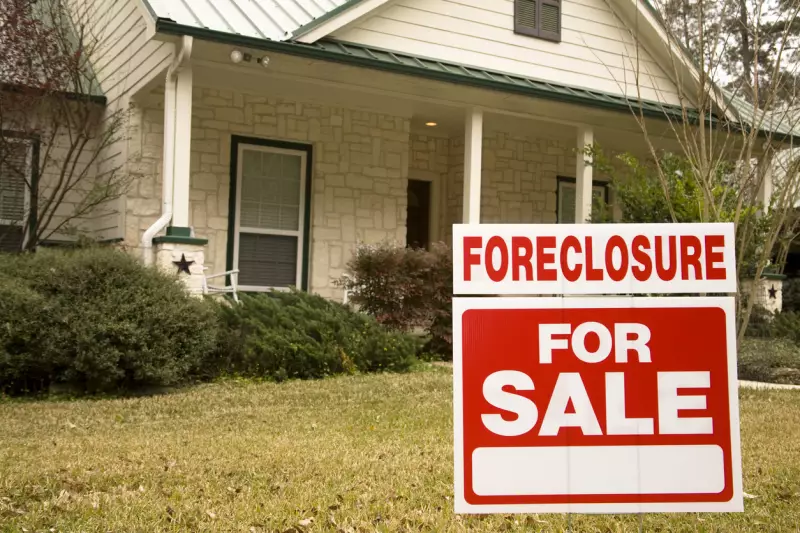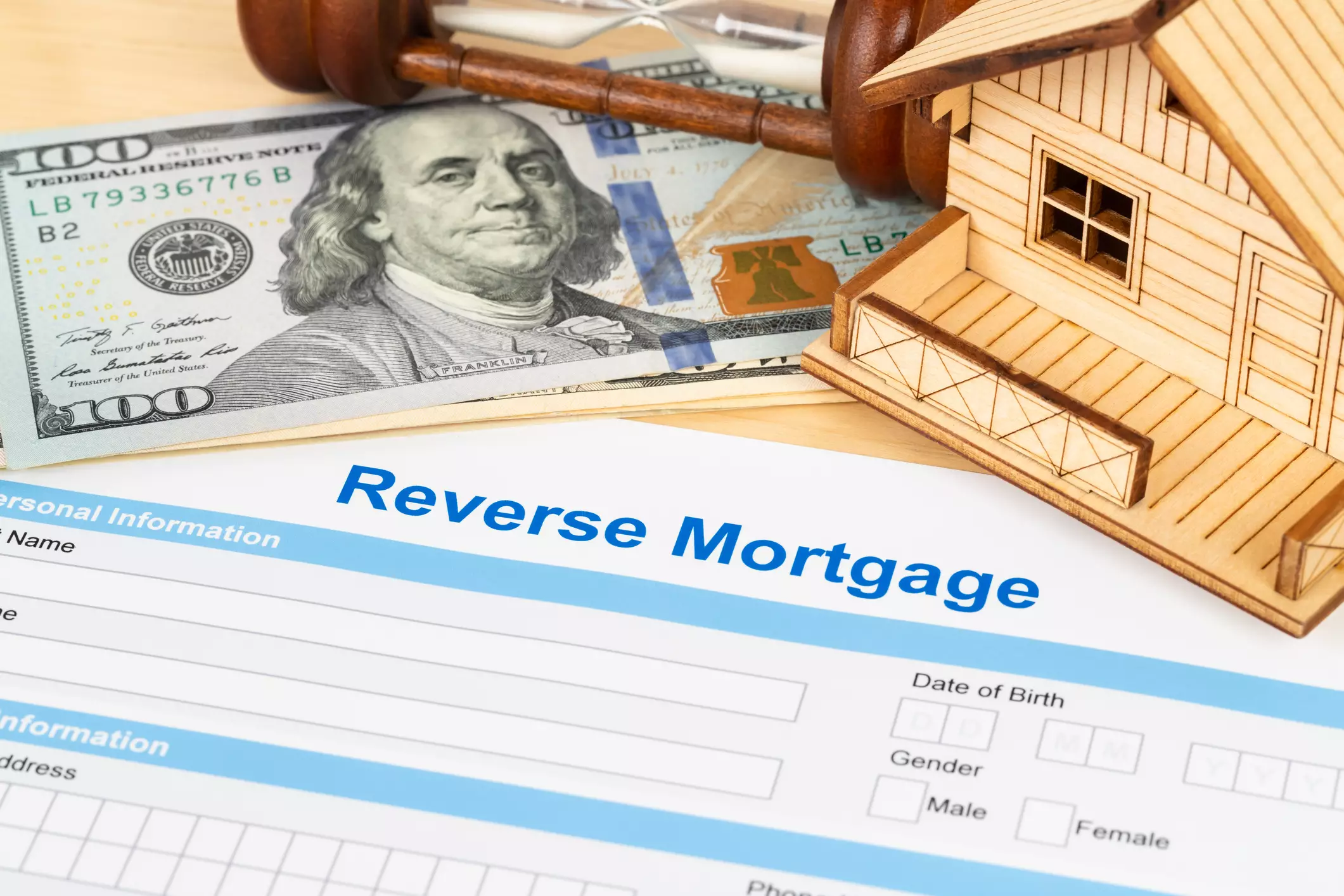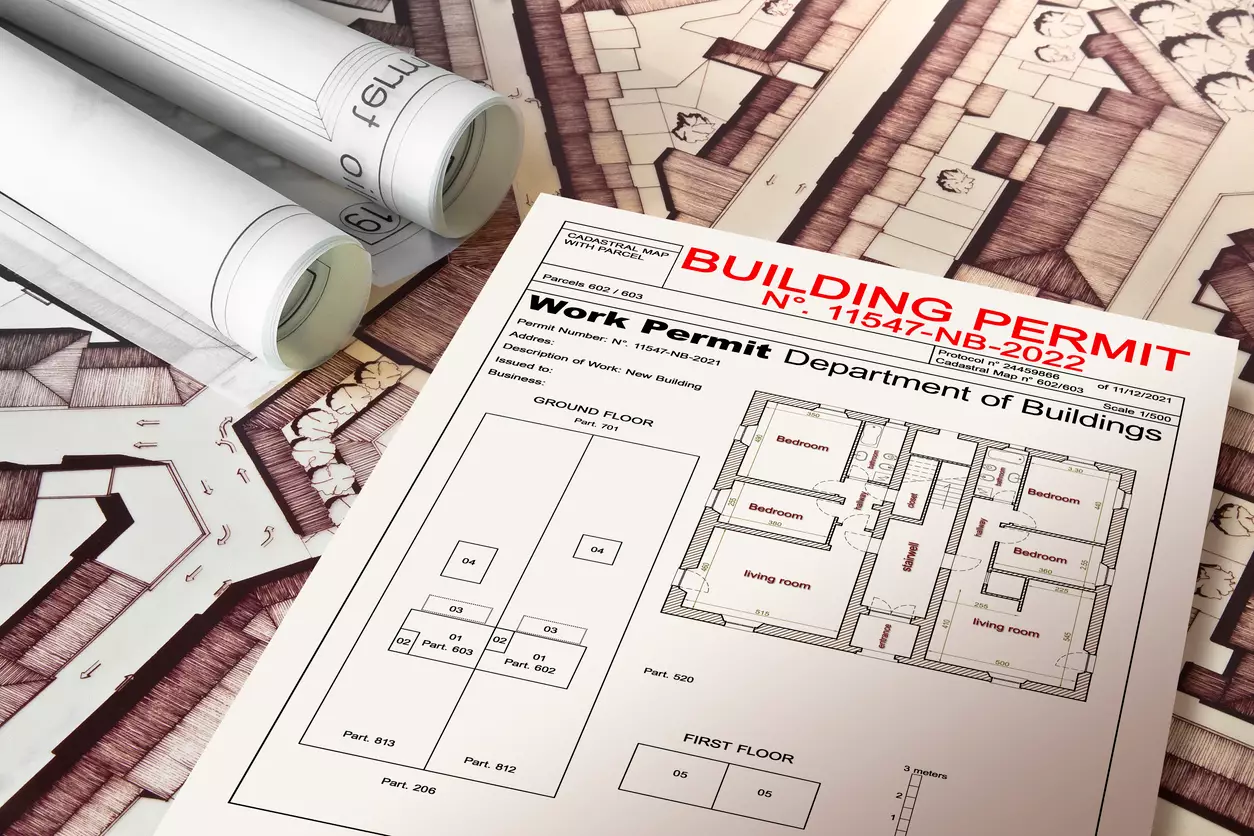What Does Pre-Foreclosure Mean?

Table of Contents
- What Does Pre-Foreclosure Mean?
- How Does Pre-Foreclosure Work? A Step By Step Guide
- Pre-Foreclosure vs Foreclosure
- How Long Is The Pre-Foreclosure Process?
- Can You Buy A House In Pre-Foreclosure?
- How To Find Pre-Foreclosure Homes For Sale
- What Is A Pre-Foreclosure Sale And How Does It Work?
- Risks And Benefits of Buying A Pre-foreclosure Property
- How To Avoid Pre-Foreclosure And Save Your Home
- Next Steps: What To Do If Your Home Is In Pre-Foreclosure
Financial hardships and unforeseeable emergencies happen to each one of us. How these hardships are handled and prepared for is the key to a successful home mortgage. The most significant expense most people will make in their lifetime is the purchase of a home. It is vitally important to prepare for life’s unexpected consequences.
Homeowners who fall dangerously behind on mortgage payments run the risk of their lender initiating the foreclosure process. This pre-foreclosure stage is the first step of a mortgage default, giving homeowners the time to take action and work with the lender to resolve their issues.
How Does Pre-Foreclosure Work? A Step By Step Guide
Mortgage lenders never want to enter the foreclosure process; it is costly for both sides, time-consuming, and the lender always receives a lower return on their money.
- Pre-foreclosure usually begins when the homeowner is 90 days or more in arrears on their payments. Lenders send a “Notice of Default” letter informing the owner that the foreclosure process has begun. The notice outlines what is about to happen and the steps a homeowner must take immediately.
- In some states and under Federal Law, homeowners must be at least 120 days behind on their payments before the servicer can initiate the foreclosure process.
- The notice is recorded at the county clerk’s office, giving them the right to file a foreclosure lawsuit with the court. Once the notice is filed, the pre-foreclosure process officially begins.
- Once the property is in default (after 3 months), late fees are charged, adding possibly hundreds of dollars to the repayment. Lenders typically call for a drive-by property inspection, making certain the home is occupied and properly maintained. Inspections are usually performed each month. Of course, any fees are added to the total.
- Once the notice of default is filed, a Broker’s Price Opinion (BPO) is ordered to establish a value. A BPO is performed by a professional in the industry with experience in establishing home values.
- The pre-foreclosure process begins immediately with homeowners who do not take action and communicate. The process may take 3 to 10 months before an eviction notice is issued.
Homeowners must act immediately or risk losing their homes. Mortgage lenders do not want to foreclose on a home loan; however, they have an obligation to recoup their investment.
Pre-Foreclosure vs Foreclosure
Homeowners must understand the difference between pre-foreclosure and the lender foreclosing on a home and evicting the occupants.
Pre-foreclosure is the initial stage of repossession, where a homeowner can communicate with their lender in the hopes of repaying the debt and saving their home. Depending on the loan terms, built-up equity, and other factors, homeowners have several options to restructure their debt and remain in the home.
Foreclosure is the legal process where a lender initiates procedures to take legal ownership of the property. There are two types of foreclosure: 1) Judicial Foreclosure is where a lender files a lawsuit to foreclose. 2) Non-judicial Foreclosure allows the lender to foreclose without appearing in court.
Investors who want the best price on a piece of property should consider a pre-foreclosed property. Real estate speculators can negotiate directly with the homeowner on a pre-foreclosure rather than go through the auction process.
How Long Is The Pre-Foreclosure Process?
When homeowners sign on the dotted line of their mortgage contract, default terms are outlined along with other terms of the agreement. The pre-foreclosure process typically begins after three to five months of missed payments.
Homeowners will know they are in the pre-foreclosure process once they receive a legal notification from the mortgage servicer. The letter outlines what is about to happen and the procedures homeowners can take to avoid foreclosure proceedings.
State laws govern the foreclosure process of any real estate. Some states require legal notification submitted to a judge for review before proceedings can take place. Other states allow foreclosure within weeks.
Communicating with the lender is the first step to resolving the foreclosure issue. However, if an agreement cannot be made, the ultimate outcome will be the lender taking their property back. Depending on the state laws, lender requirements, and contract, the pre-foreclosure process can take a few months to a year or more.
Can You Buy A House In Pre-Foreclosure?
Real estate investors are always on the lookout for the best deals possible, no matter the property type. Searching for a pre-foreclosure sale can always yield stellar profits if handled correctly. Buying a pre-foreclosure is a good idea for a permanent home as long as buyers perform their due diligence.
One of the trickiest aspects of buying a pre-foreclosure is the property owners may consider the property as “not for sale.” However, since the owner is most likely still living in the home, the condition should be above average compared to other pre-foreclosed properties on the market, and homes are typically priced below market value.
First-time home buyers and those who wish to move into a home quickly should avoid a pre-foreclosed property due to the uncertainties involved and the time frame. Experienced investors are better suited to this type of purchase.
Steps to Secure A Pre-Foreclosure Deal:
- Thoroughly research current market conditions and provide extreme due diligence before talking with the owner.
- Begin to formulate a fair market price by researching comparable sales and neighborhood desirability.
- Drill down to three to five potential properties and do a drive-by at different hours of the day. Determine any repairs or reconditioning that must be made before reselling or occupying the property.
- Consider a title search on one or two promising properties. Identify any and all legal issues and liens.
- Get pre-approved on a mortgage amount to strengthen the deal. If at all possible, consider a cash transaction that homeowners and lenders prefer: Cash Is King! Lenders will require an appraisal before loaning any specific dollar amount.
- Approach the owner, ask plenty of questions, and begin to negotiate a price. Be prepared to close quickly with any pre-foreclosure deal.
Buying a pre-foreclosure property can be attractive for investors looking for a bargain. However, the buying process is fraught with unknowns, complex, and time-consuming, with no guarantee that the homeowner will sell.
How To Find Pre-Foreclosure Homes For Sale
Two very distinct advantages to buying a pre-foreclosed home: 1) They are less expensive compared to other properties with the same features 2) Pre-foreclosed homes are not listed on the MLS, providing less competition.

Real estate investors should consider pre-foreclosed properties a primary target before other property types because of their discount and less competition. A little extra digging is needed to find the best properties. However, once the investor has begun their research, there are plenty of great resources to find the rarest of good deals.
Detailed Breakdown Of Pre-Foreclosure Resources
- HomePath By Fannie Mae is an REO management company with resources from the US Government.
- RealtyTrac features a range of pre-foreclosure and foreclosed properties.
- Realtor.com is the place to start finding capable RE Agents.
- Zillow offers filters to display on pre-closure properties.
Property wholesalers are another excellent resource for aspiring investors to network with the right industry veteran to find a pre-foreclosed deal.
Make a habit of checking with the county clerk to see if there are any pre-foreclosed properties. Visit the clerk at least once every month or quarter. Look specifically for a notice of default and notice of sale documents. Local resources such as newspapers and websites can be invaluable.
What Is A Pre-Foreclosure Sale And How Does It Work?
Homeowners who are falling behind on their mortgage payments and want to get out from under the debt should consider a pre-foreclosure sale. Before the foreclosure process is finalized, homeowners have the opportunity to rid themselves of a mortgage they cannot afford.
A pre-foreclosure sale allows mortgage holders to avoid repossession on their credit and defaulting on the loan. Buyers negotiate directly with the homeowner, as opposed to dealing with a lender’s approved auction house.
A short sale is one of the more common ways a homeowner can avoid foreclosure. In a short sale, the property is sold even though its value may be less than what is owed.
- Homeowners should contact their lender and real estate agent to discuss the possibilities.
- Hardship documentation must be prepared by the homeowner to prove their financial inability to continue making payments.
- With lender approval, the property is marketed through traditional channels and their real estate agent.
- Buyers will negotiate directly with homeowners, and the deal is closed based on lender approval terms and conditions.
Risks And Benefits of Buying A Pre-foreclosure Property
Pre-foreclosure is the early stage of a bank taking back their property for resale and recouping what is owed on the loan. Investors and potential homeowners find that pre-foreclosures make for an excellent deal with plenty of profit potential.
- A significant advantage to these types of deals is buying a good-conditioned home at a discount without the endless competition, avoiding bidding wars for premium properties. Pre-foreclosed homes are not listed on the MLS, so extra digging will be required to find a suitable deal.
- If the property goes into a pre-foreclosure stage, lenders, government entities, and others are motivated to sell quickly.
- There are unique disadvantages to purchasing a home on the verge of being foreclosed. 1) the entire process is excruciatingly slow, meaning terms, property value, and especially interest rates can change dramatically. 2) liens and back taxes are always a concern, along with hidden problems with the home. (home sellers are notorious for not disclosing all that is wrong with their home)
- Other disadvantages include multiple parties quickly coming on board, such as the homeowner, lenders, and lien holders. Some states give the homeowner a “right of redemption,” meaning the sale could be reversed.
A pre-foreclosure process can be a months-long affair, not a one-day event. Lenders give homeowners adequate time to rectify the situation and remain in the home. This homeowner leeway can ruin months of research and preparation for potential buyers.
How To Avoid Pre-Foreclosure And Save Your Home
Once a property goes into pre-foreclosure, the homeowner does have a few viable options. As stated earlier, mortgage lenders and other creditors do not want to foreclose, especially if the home’s value is less than what is owed.
Options
- Early communication with the lender is the key. Never wait until you are behind at the 90-day threshold.
- Anticipating financial difficulties and discussing any options with your lender helps immensely. Lenders may offer to modify your loan at a lower interest rate and payment or create an entirely new payment plan.
- Loan forbearance gives homeowners time to catch up on their mortgage by suspending or delaying payments for a specific number of months. Loan terms and amount of payment delay (usually three to twelve months) depend entirely on the lender.
- Home loan forbearance and modification are temporary relief programs. If possible, homeowners should consider refinancing their loans or a short sale, as discussed earlier.
Real estate attorneys can lead homeowners into Chapter 13 or other forms of bankruptcy to avoid foreclosure on their credit file. A capable attorney can also help with a “deed in lieu of foreclosure,” which is transferring the title to the lender.
Next Steps: What To Do If Your Home Is In Pre-Foreclosure
Homeowners must never avoid the situation of pre-foreclosure. As mentioned earlier in this article, lenders do not want to foreclose; the process is time-consuming and costly. Explore every viable option and seek out the help of a counselor or real estate attorney as soon as possible.

Pre-foreclosure is the first warning signal before other dire consequences begin to take place. Sit down with the family, map out where every penny is going, and find ways to cut.
Consider delaying payments on unsecured debt such as credit cards. Consider all the options stated above and any other payment plans offered by a foreclosure attorney or HUD-approved counselor.
Act quickly, and NEVER wait until the last minute
Search Property & Deed Records
Table of Contents
- What Does Pre-Foreclosure Mean?
- How Does Pre-Foreclosure Work? A Step By Step Guide
- Pre-Foreclosure vs Foreclosure
- How Long Is The Pre-Foreclosure Process?
- Can You Buy A House In Pre-Foreclosure?
- How To Find Pre-Foreclosure Homes For Sale
- What Is A Pre-Foreclosure Sale And How Does It Work?
- Risks And Benefits of Buying A Pre-foreclosure Property
- How To Avoid Pre-Foreclosure And Save Your Home
- Next Steps: What To Do If Your Home Is In Pre-Foreclosure
Related Articles
Recent Articles
-
![]() Best Real Estate Markets to Invest in 2025 for Maximum Returns
Best Real Estate Markets to Invest in 2025 for Maximum Returns
-
![]() What Is Appraised Value and What Does a Property Appraiser Do?
What Is Appraised Value and What Does a Property Appraiser Do?
-
![]() What Is a Property Deed Transfer and How Does It Work
What Is a Property Deed Transfer and How Does It Work
-
![]() Everything You Need to Know About Building Permits in Florida
Everything You Need to Know About Building Permits in Florida
-
![]() Everything You Need to Know About Commercial Property Insurance
Everything You Need to Know About Commercial Property Insurance










